By I. PHILIPP
Professor of Pianoforte Playing at the Paris Conservatoire
Professor of Pianoforte Playing at the Paris Conservatoire
At less than twenty years of age (October 20, 1829) Chopin wrote from Warsaw to his friend, Titus Woyciechowski, "I have composed an etude after my own peculiar manner." And on the 11th of November of the same year he announced to the same friend that he had completed a series of etudes with which he would be delighted to have him become acquainted. It was between Chopin's nineteenth and his twenty-fifth year that he composed the twelve etudes (Op. 10) which revealed more than any others his extraordinary genius. In these, one might say, he transformed musical art in general. For these etudes mark an epoch. Let us consider the repertoire of etudes in the year 1830—when one plays those of other composers: the pretty etudes of Moscheles and of Cramer, of Humell (sic) and of Berger, so mediocre; those of Clementi, so classic; those of Kessler, so necessary for the development of pianistic technic, but so dry! Bertini's agreeable studies and exercises, or Czerny's innumerable and useful technical works, useful and occasionally graceful. We may play all of these only to discover that they do not compare with those of Chopin. For these masterpieces open a horizon to music and technic—these inventions, so audacious, so full of poetry and absolute perfection of form.
The American biographer of Chopin, the spirited and ingenious writer, James Huneker, in his fine book, "Chopin, the Man and the Artist," speaks of these etudes as the work of a Titan, and predicts for them that they will last forever. "They will never be equalled," says another critic, Nieks. "These studies are emphatically the aesthetic view of the otherwise dry technic," Kullak says. "In a remarkable manner Chopin here gives all his art—all his genius. He is so young, so virile in these etudes—more so than in any of his other works," writes George Matthias. "Here in these etudes," says Stephen Heller, "is all the freshness of youth and all the originality of genius. He has penetrated an unexplored region of harmony and rhythm."
The biographer of Liszt, Mme. Ramann, on the contrary, insinuates lightly that they were largely inspired by Liszt. The reverse is the truth. The date of his composition is all against it.
For instance, let us analyze especially the etudes (Op. 10) dedicated to Franz Liszt.
No. 1, A Major. In teaching his pupil, Mile. Streicher, this etude, Chopin said to her, "This etude will do you very much good if you study it correctly; it will stretch your hand. But if you study it badly it will injure you." On a bass proud and strong these formidable arpeggios traverse the keyboard. Before Chopin no one had ever dared these extensions, mounting and ascending, and this etude inaugurated what was of a certainty a new school of technic. It is novel, audacious, both in design and arrangement. The etude should be played slower, as it is marked 160 to the quarter note, perhaps, with a strong, broad tone, forte throughout, increasing to a fortissimo in the dissonances. The severe character á la Bach of it must be preserved.
Preparatory Exercises
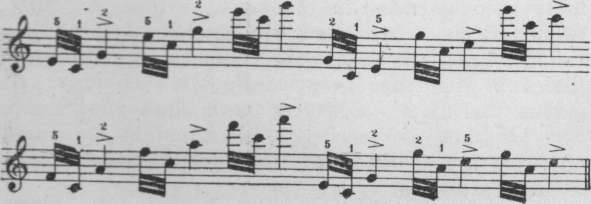
The etude requires to be practiced two measures at a time, and (above all things) with careful listening to the tones produced on the piano.
Transpose to all keys.
Hold all notes as long as possible.
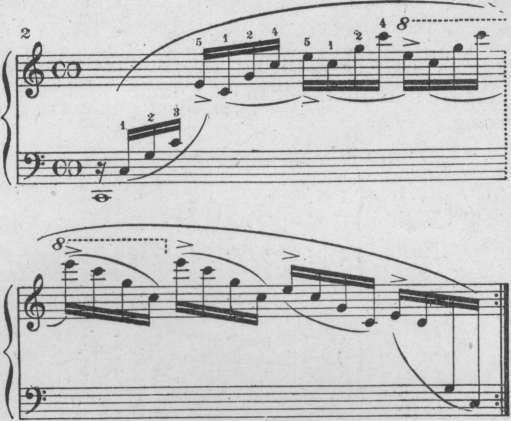
Practice each group of notes three times.

In the same manner as the others, Lento
 Legatissimo e Vivo, with a firm, sure touch.
Legatissimo e Vivo, with a firm, sure touch.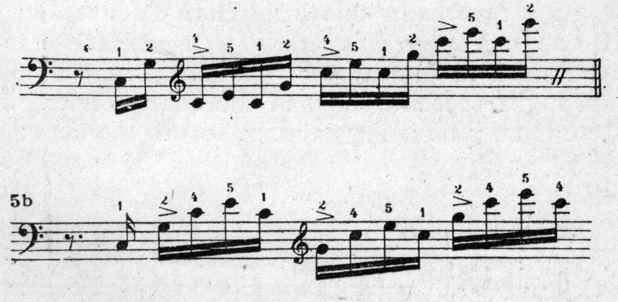
Through all the keys: F: Mf, P, observe dynamics exactly.
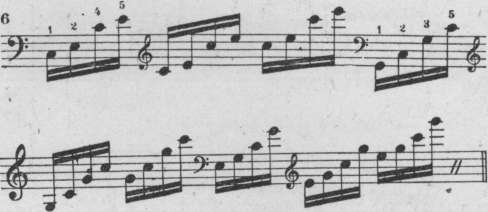
With interpolated double notes, play very carefully.
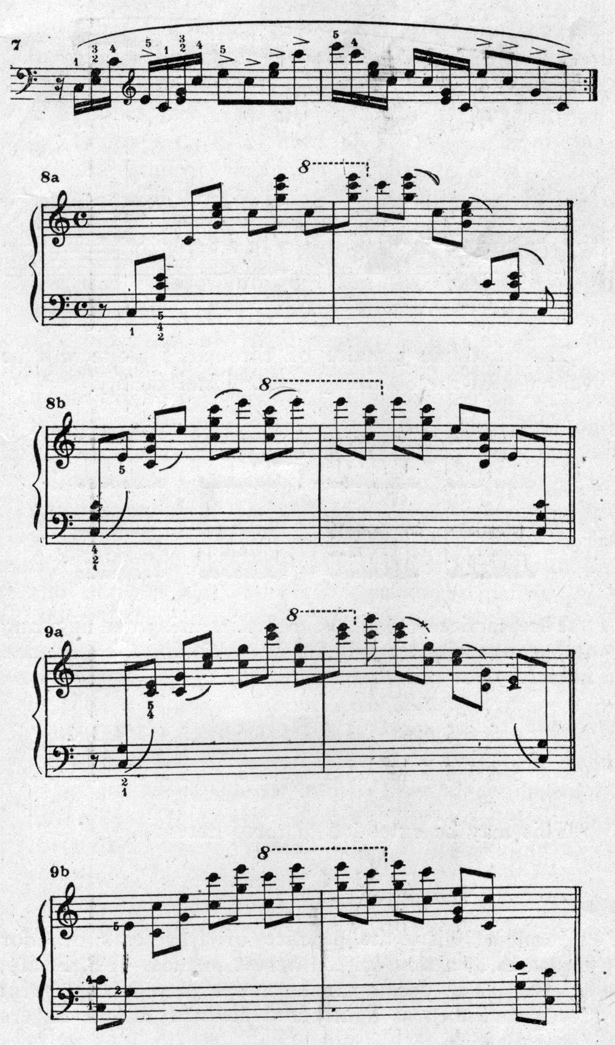
Hold as long as possible, but do not overdo.
Practiced thus, this etude will give power to the fingers, and develop the stretching muscles of the hand. The student must guard against practicing too long, and I advise him not to use too much power. The arms, the wrists should be allowed to be free and supple while the fingers press firmly on the keys. All the parts of the right hand require to be practiced with the left.
Etude Op. 10, No. 2
This is one of the most difficult of all the etudes in the pianistic repertoire. It requires not only the supreme technic of the first etude, but also all the orignality, (sic) and it requires to be played with the greatest lightness, the most absolute suppleness and with an even and consummate pianissimo. If one is master of his fingers he may produce the effect of a delicate murmur, of a reverie in this little chef d'oeuvre.
If one can play this etude well at M.144 to the quarter note, as indicated by Chopin, it may be played at the higher speed of 160 to the quarter note.
Here is an interesting exercise for all the keys:
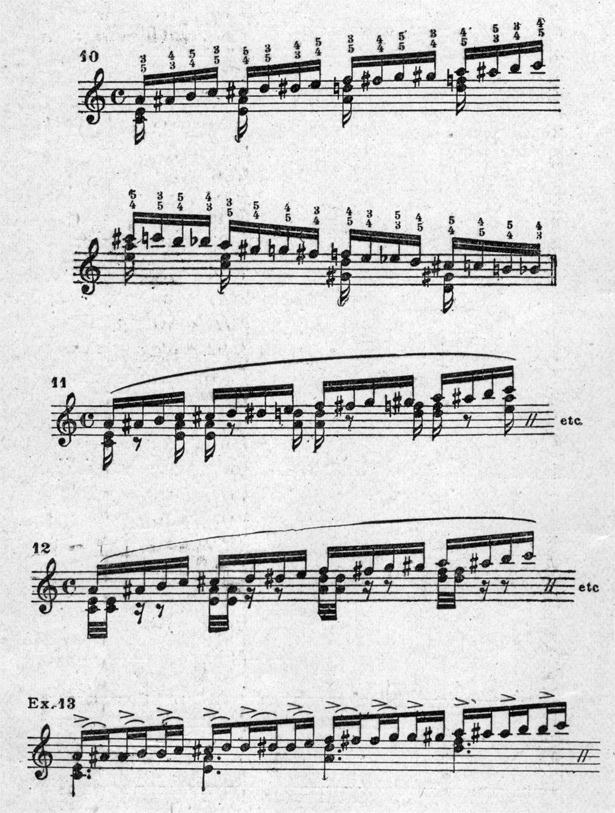
The rhythmic practice of chromatics alone will be very useful for obtaining great digital facility.
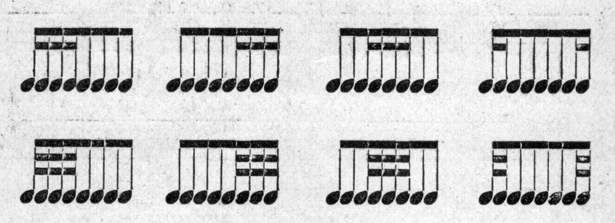
The practice of double chromatics using one fingering for groups of three, will aid in developing the glissando necessary for this etude.

This may be extended to three notes: 3 4 5 etc.
I advise, also, the practice of fragments of four measures at a time with different nuances—FF, F, Mp, P, PP. The accompanying notes played with great force, and then as lightly and distinctly as the fingers can play it.
Etude 3
One of Chopin's pupils, Gutman, relates that his illustrious master often said in his presence that never had he found a more beautiful melody than this etude; and one day, while he was playing it, that Chopin sighed deeply and ejaculated, "Oh. my country!". The double notes which abound in the middle part must first be studied absolutely thoroughly to make one master of all these difficulties. Only thus may one interpret this magnificent work, without too greatly sacrificing the Rubato. Hans von Bülow said of the Rubato: "One cannot apprehend from a half-baked pianist what is the Rubato of Chopin any more than one can learn from a chair what is the philosophy of Kant."
Bars 32, 33 and 36, 37 should be played very rapidly, holding back the time slightly in the last three double croches of bars 33 and 37. Bar 38-42 and 46-52 are to be played very fast. Bars 43 and 45 should be played slowly. The pedal plays an immensely important part in this etude. It must be used to shape the phrasing, to vitalize the melodic "line," and must be changed often, and with easy, sure movement, avoiding the "bumping" that is the mark of the tyro in pedal technic.
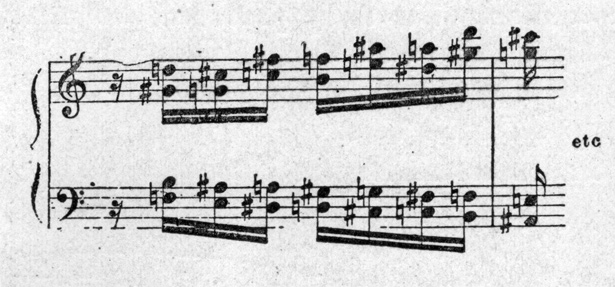
Practice first, emphasizing strongly the top notes— not the bottom ones—then the same with the next fingering.
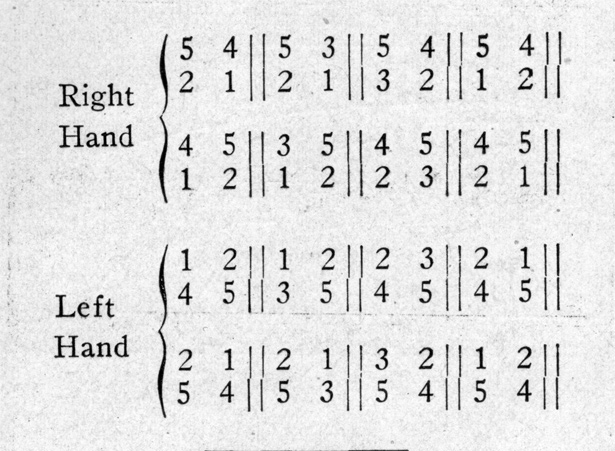
Note. I do not know wheter it is possible to grade these etudes in the order in which they should be taken according to their difficulties; but here is a grading that is fairly rational: Op. 25, No. 2 ; Op. 25, No. 7 ; Op. 25, No. 4 Op. 25, No. 5 ; Op. 10. No. 6 ; Op. 25, No. 3 ; Op. 25, No. 9; Op. 10, No. 9 ; Op. 10, No. F (sic) ; Op. 10, No. 3 ; Op. 10, No. 5; Op. 25. No. F (sic) ; Op. 25. No. 8 ; Op. 10, No. 4 ; Op. 10, No. 8 Op. 10, No. 10; Op. 25, No. 12; Op. 10, No. 12; Op. 10, No. 11 ; Op. 10, No. 2 ; Op, 10, No. 1 ; Op. 25, No. 6 ; Op. 25, No. 10; Op. 25, No.11.



